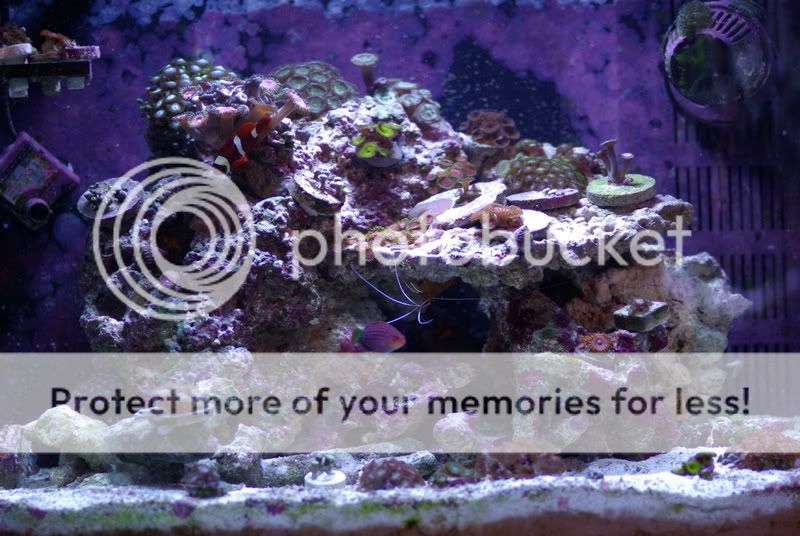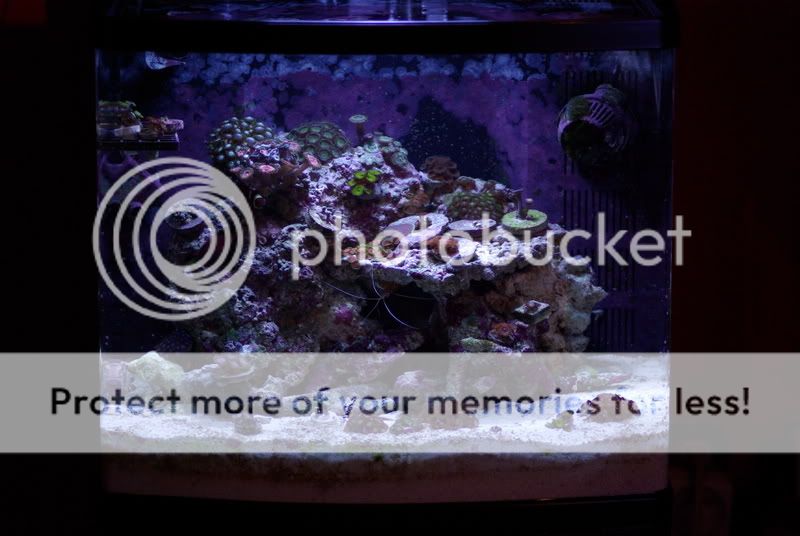- Location
- Lindenhurst LI
Tank's looking great bro. It gets brighter and brighter every time i see it. Get a pic of the sun coral when it opens 

I have to cover the tank, because I have two pearly jawfishes that wil take flight,if I didn't cover it. I have about 5/8 covered with glass and the other areas covered with plastic grill material . The temperature is fine, because the air conditioning keeps the house at about 74 degrees. the light is only on for about 8 hours!! Your tank looks amazing!! I'm going to try to make my tank look like yours!!
Ryan, blue spots have a real low survival rate and you probably made the right decision of not buying it. Even large public aquariums have difficulty keeping them alive. Here's what Kevin (Director of Live Aquaria) wrote about Blue Spotted Jawfish
"Fish of the genus Opistognathus will find a comfortable spot in the aquarium and start moving large quantities of substrate with their giant mouths to make a nice hole next to some structure such as live rock. These fascinating fish will spend countless hours perfecting this burrow, then capping it off with a wall of small rocks (or in Sara's case her frags!). I always like to provide these fish with quite a few small pieces of rock or coral rubble that are less than 1" in length so they have all the building material they need to complete their project.
Once settled into the aquarium that has a very tight fitting lid and covered overflow boxes in reef ready aquariums, Blue Dot Jawfish require several feedings a day of enriched mysis and other meaty fare. When provided with the proper environment and husbandry, and with the acquisition of a healthy, quarantined specemine, these fish can adapt well to most reef aquaria that are maintained between 70-80 degrees, and live for many years.
Unfortunately the biggest problem with Opistognathus rosenblatti is the handling of these fish directly after they are harvested. When these fish are stressed by overcrowding and are exposed to less than ideal water conditions, this can open to doors to numerous bacterial infections and other pathogens from open wounds, or lack of protective body slime (they can be very aggressive among themselves when kept together in tight quarters).
Some Blue Dot Jawfish are not handled properly, and this normally will not show up until weeks later as they travel through the chain of custody. This is why some hobbyists and retailers may have very poor luck when trying to maintain this species.
They key to success with this incredible fish is to make sure you obtain a very healthy specimen that has been handled and cared for properly all through the chain of custody. Purchasing specimen from a place that has strict quarantine procedures, and can administer the proper antibiotics if the fish shows signs of disease is very critical. Once in your care and provided with the criteria listed above, this beautiful fish should adapt well and be happy and healthy for many years to come.
On some occasions during the collection, holding and handling of these fish before export coupled with the transport stress through the chain of custody, Opistognathus rosenblatti will oftentimes be affected by a ciliated protozoan that will manifest itself on the fishes body. Once these protozoans become overbearing for the fish (which can happen in just 24-48 hours), they cause severe stress and even death to these fish very quickly.
Proper quarantine procedures are critical for this species so that if these protozoans affect the fish, a treatment protocol can be incorporated immediately as Jawfish do not have large thick scales for protection. Due to this common problem we incorporate Formalin baths and a few other proprietary techniques to combat this issue, with very good results.
More often than not this pathogen is Brooklynella hostilis, the same ciliated protozoan that affect clownfish in the marine aquarium trade."
im not going 2 lie mine looks cooler but yours isn't that bad with the ryan mod "get them now folks they sell fast"
Ryan, which kind of bulb are you using? and K?
Ryan, is that light system the one that comes with the Aquapod 24g? do you have some photos of your light system?
I used to have the 12G with the HQI but it was to much light for the corals and now I upgraded it to the 24G and I was wondering if it was correct to use that light on the new one instead of the 36W*2 that comes with the 24g. Thanks






